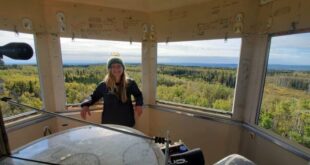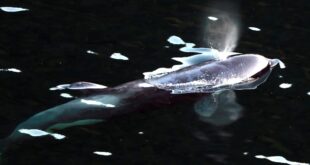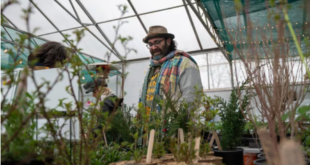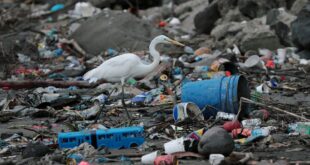Low snowpack and higher temperatures forecast for El Niño year already raising wildfire concerns.

The first week of January isn’t usually wildfire season. But as 2024 began, more than 100 “zombie fires” were actively burning in British Columbia — holdovers from last summer that typically go dormant over winter.
“That is mind boggling to me. Just unheard of,” said Lori Daniels, a professor with the University of British Columbia’s department of forest and conservation sciences.
The warm, dry weather that capped off what is expected to be declared the planet’s hottest year on record — and Canada’s most destructive wildfire season by a longshot, with more than 6,500 fires burning close to 19 million hectares — is not over.
With the global El Niño weather system continuing through this spring, forecasts suggest 2024 could be even hotter — prompting wildfire and public policy experts to call for more wildfire prevention efforts now.
“The whole concept of business as usual is out the window,” said John Robinson, a professor at the Munk School of Global Affairs and Public Policy and the School of the Environment at the University of Toronto, adding governments, NGOs and social support organizations have to learn to be more adaptive.
“Unfortunately, response to disaster isn’t a time where you get a lot of creative policy,” he said. “We need proactive or pre-emptive response.”
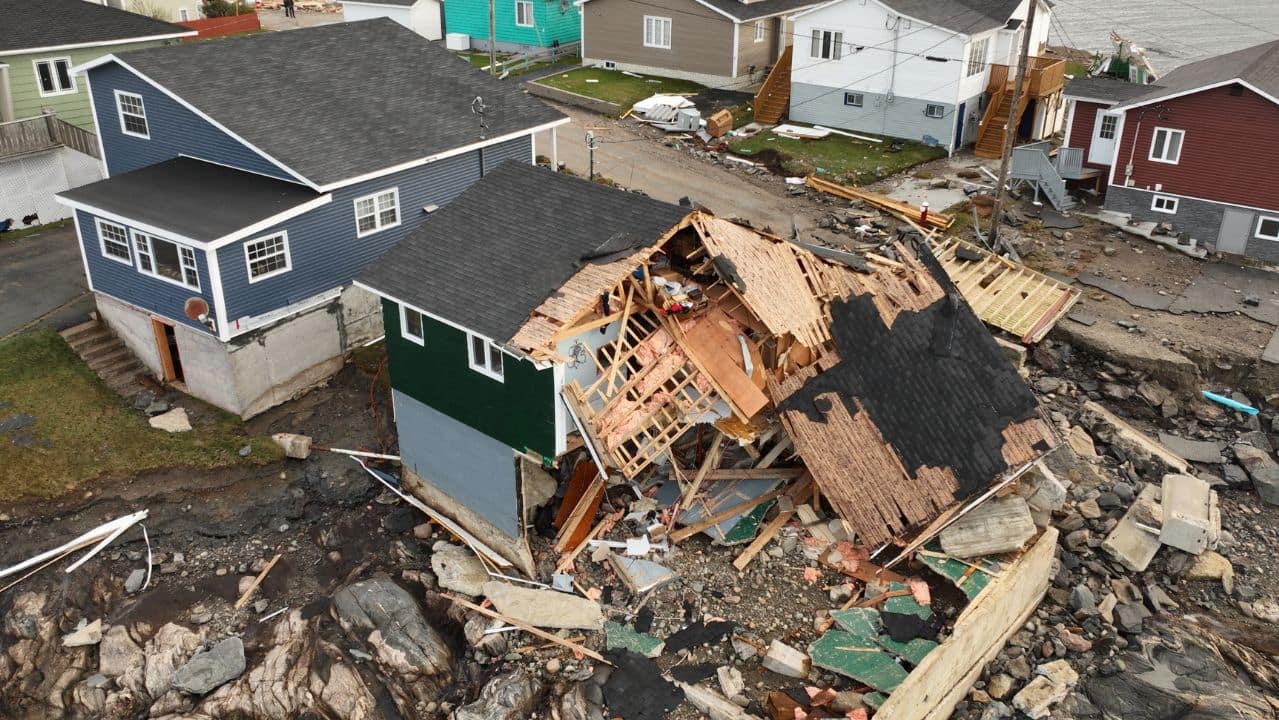
How Canadians can better prepare for extreme weather events
Paul Kovacs, the executive director for the Institute for Catastrophic Loss Reduction, explains measures Canadians can take to protect themselves and their homes from extreme weather events, including flooding and even hurricanes, in light of the devastation from post-tropical storm Fiona in Atlantic Canada.
Why 2024 is already worrying
Environment and Climate Change Canada (ECCC) is projecting above-normal temperatures across the country at least through fall, and about 70 per cent above normal in April through June.
“There’s really no indication of below normal or, until we get maybe to the late fall, even near normal,” said Bill Merryfield, a research scientist with ECCC’s Canadian Centre for Climate Modelling and Analysis.
ECCC is also projecting below-normal snowpack across all provinces through spring, leading to drier conditions come summer. In December, snowpack was less than a quarter of what’s normal across much of southern Canada, Merryfield said.
NASA and the National Oceanic and Atmospheric Administration (NOAA) will release their official 2023 temperature numbers on Jan. 12, but all data so far indicates 2023 was the hottest on record globally.
Tom Di Liberto, climate scientist and public affairs specialist with NOAA, said when El Niño events straddle two years, it is typically the second year that ends up being hotter, indicating a strong possibility that temperatures could increase again in 2024. A recent example was 2016, the previous hottest year on record following El Niño.
“When you have back-to-back years of such extreme temperatures, it’s kind of allowing the possibility to be a bit more severe,” Di Liberto said.

Kevin Hanna, director of the University of British Columbia’s Centre for Environmental Assessment Research and a former wildfire fighter, says the increasingly extreme heat and drought conditions have led people in disaster-prone regions to develop a “fear of summer and what it will bring.”
“Is this the summer where my farm or ranch gets hit? Is this the summer when my town has to evacuate? You see it on people’s face, you hear it in their voice,” ” Hanna said. “I know ranchers who have lost property— terrible flood damage, terrible wildfire damage.”

2023 already the worst Canadian wildfire season by several metrics
New numbers from the federal government show the 2023 wildfire season is already the worst on record in terms of area burned, number of evacuees and number of foreign firefighters assisting — and we’re only halfway through the season.
Protecting infrastructure
Daniels said it is time for governments to increase investment in programs to help people make their homes more fire resistant, and to ensure all new builds in fire-prone areas follow FireSmart principles like those laid out by Natural Resources Canada.
She said Canadians in fire-prone areas can implement these principles themselves by tidying up yards, making sure there is no burnable debris in the gutters or under decks, and reconfiguring gardens so rocks are closer to buildings and flammable vegetation is pulled further away.
She said communities across Canada should start making emergency plans of action before spring, and accepting that it’s not a matter of “if, but when” fire is coming to their communities.
Hanna said Canada needs to have a bigger conversation about prevention and managing risk by reducing the vulnerability of infrastructure, and suggests wildfire vulnerability assessments and considerations become “part of everything we do in the permitting and review process” for major infrastructure projects like pipelines, power lines, highways and railways.
A likely unpopular suggestion heading into a dry and drought-prone year is that we might have to rethink some routine summer activities Canadians take for granted, Hanna says, including potentially limiting access to certain parts of the backcountry.
“If we want to keep areas safe, we might have to say people aren’t allowed to go there. Because some people do things they shouldn’t do,” Hanna said.
“One spark from an ATV or a hot muffler on a dirt bike or something is going to potentially cause a huge amount of trouble.”
Michael Norton, director general of the Canadian Forest Service with Natural Resources Canada, said the federal government is working on preventative measures through programs like the Wildfire Resilient Futures Initiative, which is investing $285 million over five years with a focus on prevention and mitigation, including reinforcing the FireSmart Canada program.

How to prepare your home for climate change
As extreme weather events become increasingly common, experts are warning homeowners to start preparing for the impacts of climate change. For most people, safety planning is as easy as going to the hardware store.
Fighting fire with fire
Counterintuitively, more fire could help prevent the most destructive blazes this summer.
“[Fire] is maybe the only natural disaster, where on one hand, it’s extremely destructive, and on the other hand, is part of the solution,” Daniels said, adding that Canada’s forest management has focused primarily on maximizing economic benefit, which has increased the landscape’s fire vulnerability.
“We’ve just left too much woody debris down on the ground, and that’s fueling these new fires. And it’s killing regenerating young forests that are 20 and 30 years old,” she said.

Norton, said prescribed burns, forest thinning and Indigenous cultural burning practices are an important piece of fire mitigation that fire managers are deploying more often.
“Prescribed fire is not is not putting something artificial onto the landscape. It’s using something that is in fact part of nature, in a controlled way to reduce risks,” he said.
“Part of the challenge that we’ve had in this country over many decades of fire management is a disproportionate emphasis on only fire suppression activities,” Norton said.
“All the provinces and territories are increasingly trying to shift focus towards a greater emphasis on preventing human-caused wildfires in the first place, and proactively mitigating risks from fires before they occur.”
Collaboration and local expertise
Hanna says it is important to identify institutional barriers that are preventing controlled burns from being done sooner, such as multiple levels of decision making spread across different agencies.
He said that applies to Canada’s model of firefighting as well, which has become “very centralized” and “elitist,” run by provincial bodies that do not always work as closely as they could with locals.
“I think we have to rediscover the value of local people, their expertise and knowledge. Particularly in parts of rural communities in Canada, remote communities in Canada, where there’s a lot of folks who know the land, know how to run machinery, who can work in a collaborative way with forest wildfire services to to be proactive, as well as reactive,” he said.

Those people also have a vested interest in protecting their homes and communities, but getting them on board can sometimes be a last-minute scramble.
“How can you deploy those resources quickly without going through a two-day procurement process or form-filling process? That’s very important,” Hanna said.
Norton said the federal government has recognized this and is committing more than $800 million to invest and train additional firefighters with a particular focus on Indigenous people, and working to bolster firefighting equipment on reserves.
“Our training funding is targeting a fairly local level,” he said.
Building on last year’s lessons
Daniels said Canada’s wildfire response has been strong, as evidenced by a lack of civilian deaths last year despite the massive destruction of property. She worries, however, that our past successes may be “one of our barriers to future adaptation.”
The dangers to human life are also becoming evident, with eight firefighters losing their lives fighting wildfires across Canada in 2023.
“The firefighter deaths rocked the wildfire community across the country,” Norton said.
Apart from the sheer number and size of fires in 2023, firefighters are dealing with increasingly severe fire behaviour like the proliferation of pyrocumulonimbus clouds, thunderstorms created and driven by the heat of extreme fires that can sometimes create new fires.
But among the challenges, Norton points to some major federal successes. He said Canada brought in more than 5,600 firefighters from 12 other countries to help fight fires in 2023 and signed new agreements to ensure support from other countries moving forward.
The Canadian Forest Service also delivered new wildfire intelligence tactical mapping products to provinces and territories, and in 2023 the U.S. Department of Defense deployed FireGuard, a new high-tech fire detection system, to help Canada battle wildfires using real-time data from drones and satellites to help detect new flareups in remote areas for the first time.
“We had, under incredible pressure, had some quite striking successes that we are working very hard to learn from to be able to reproduce as and when necessary in the future,” Norton said.
*****
Credit belongs to : www.cbc.ca
 Atin Ito First Filipino Community Newspaper in Ontario
Atin Ito First Filipino Community Newspaper in Ontario
